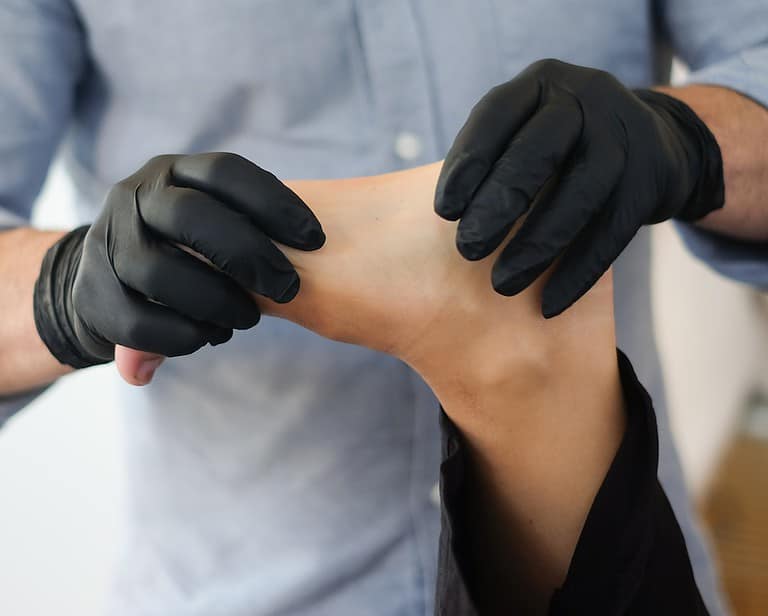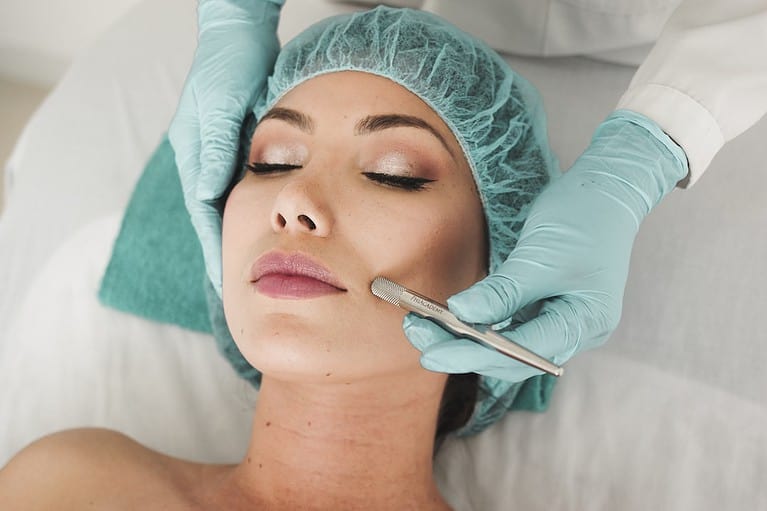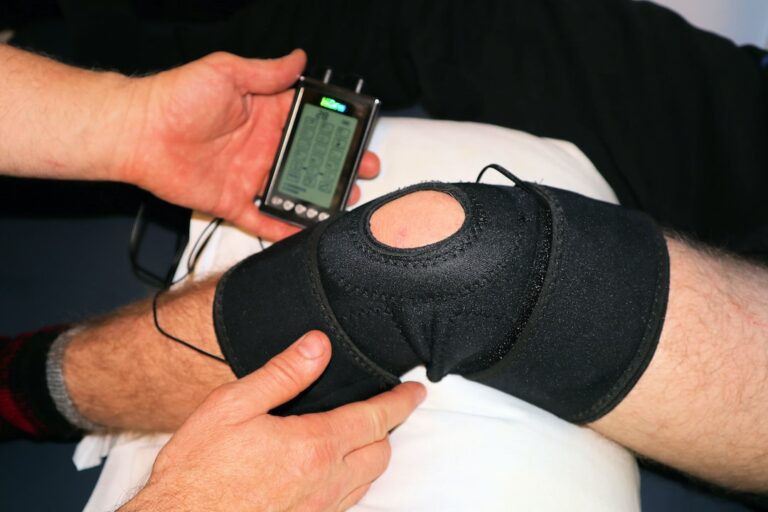How to Use Microcurrent Therapy for Self-Care
The modern family is always looking for ways to be healthier and more independent. One query that has been gaining popularity in recent years is how to use microcurrent therapy for self-care. Microcurrent therapy uses low-level electrical currents to stimulate the body’s healing process, helping with a variety of health issues including pain relief, injury recovery, and stress reduction.
In this article, we will explore what microcurrent therapy is, how it works, who can benefit from it, and how to use microcurrent therapy for your personal care routine. By understanding these key points about using microcurrent therapies you’ll have all the information needed to make an informed decision on whether or not this treatment could help your family become healthier and more independent!
Table of Contents
What is Microcurrent Therapy?
Microcurrent therapy is a type of electrical stimulation used to treat various medical conditions. It involves the use of very low-level electrical currents, usually between 0.5 and 500 microamperes (µA).
These currents are applied directly to the skin via electrodes to stimulate nerves and muscles. The goal of this therapy is to reduce pain, improve circulation, increase the range of motion, and promote healing. It works by stimulating nerves and muscles through direct contact with the skin using electrodes placed on specific areas affected by injury or illness.
There are many potential benefits associated with microcurrent therapy, including:
- Reduced inflammation.
- Improved circulation.
- Increased range of motion.
- Enhanced muscle strength and tone.
- Accelerated wound healing time.
- Decreased pain levels from chronic injuries or illnesses such as arthritis or fibromyalgia.
- Relief from headaches/migraines.
- Reduction in scarring.
- Improved sleep quality.
- Increased energy levels.
- Better mental clarity.
- Faster recovery times after surgery or physical trauma.
- Quicker resolution from acute injuries like sprains/strains/tendonitis.
- Improved lymphatic drainage which can help flush toxins out more efficiently.
- Overall better health due to its ability to balance bioelectricity within cells leading them back into homeostasis.
Microcurrent therapy is a safe and effective way to reduce pain, improve circulation, and promote healing. It can be used for both medical treatments as well as self-care. Let’s take a look at how to use microcurrent therapy by knowing its different types.
Different Types of Microcurrent Treatments
Microcurrent treatments are becoming increasingly popular in the world of wellness and self-care. It is believed that this stimulation can help reduce pain, improve circulation, and even promote healing. By learning its different types, we also learn how to use microcurrent therapy for different self-care purposes.
Here’s an overview of some different types of microcurrent treatments available today:
Acupuncture Microcurrent Therapy (AMT)
AMT is based on traditional Chinese medicine principles and involves inserting tiny needles into specific points along energy pathways known as meridians. The needles then deliver a very small electric current to stimulate the area being treated.
AMT has been used for centuries to treat various conditions such as chronic pain, headaches, stress, fatigue, digestive issues, insomnia, and more.
Transcutaneous Electrical Nerve Stimulation (TENS)
TENS therapy works by sending electrical impulses through electrodes placed on or near the skin at specific areas where there is pain or discomfort. These impulses travel along nerve fibers to block pain signals from reaching the brain. It also stimulates endorphin production which helps reduce inflammation and relax tight muscles.
TENS has been used successfully for treating lower back pain as well as sciatica symptoms like numbness or tingling in legs or feet due to nerve compression caused by herniated discs or spinal stenosis.
Cranial Electrotherapy Stimulation (CES)
CES utilizes a mild electrical current delivered through electrodes placed on either side of your head just above your ears. This lasts for approximately 20 minutes per session, with each session lasting up to three days apart depending on individual needs.
This type of treatment is said to help regulate moods, decrease anxiety levels, improve sleep quality, increase alertness and concentration, and boost energy levels and overall well-being.
Galvanic Skin Response (GSR)
GSR measures changes in skin conductance when exposed to certain stimuli such as fear or excitement which can be useful information when trying to determine how someone may react emotionally during stressful situations. During GSR sessions, two metal plates are attached at strategic locations around one’s body before delivering a small amount of electricity between them causing slight muscle contractions that measure changes in sweat gland activity which can provide insight into emotional states.
Microcurrent Facials
Microcurrent facials, also known as “non-surgical facelifts,” are a type of facial treatment that uses low-level electrical currents to stimulate the muscles in your face. This helps reduce wrinkles and fine lines while improving skin tone and texture.
The microcurrent is delivered through special electrodes placed on the skin which cause the underlying muscles to contract and relax. This process helps to improve circulation, increase collagen production, and give you a more youthful appearance.
(Source)
How to Find a Qualified Practitioner for Microcurrent Therapy?
In learning how to use microcurrent therapy for your self-care, finding a practitioner is one important step. Finding a qualified practitioner for microcurrent therapy can be daunting, but it doesn’t have to be. With the right research and questions, you can find an experienced professional who will provide quality care.
Researching Practitioners in Your Area
Start by researching practitioners in your area who offer microcurrent therapy services. Check online reviews and ask friends or family members if they know of any good providers. You should also look into their qualifications and certifications to make sure they are licensed and certified to practice this type of therapy.
Questions to Ask When Choosing a Practitioner
Once you’ve narrowed down your list of potential practitioners, it’s important to ask them some key questions before making a decision.
Find out how long they have been practicing microcurrent therapy, what types of conditions they treat with this type of treatment, and what kind of results their patients typically experience after receiving treatment from them.
It is also important to inquire about the safety protocols that the practitioner follows when administering treatments as well as any possible side effects associated with the procedure itself or its use on certain individuals or medical conditions.
Ask for Referrals
To ensure that you receive quality care from an experienced provider, consider asking around for referrals from other professionals such as doctors or physical therapists who may already work with someone offering microcurrent therapy services in your area. Additionally, check out online forums where people discuss their experiences with different practitioners so that you can get firsthand accounts from those who have used these services before making a final decision on which one is best suited for your needs.
Finally, do not forget to read up on all available information regarding microcurrent therapies so that you understand exactly what it entails before committing yourself financially or physically.
At-Home Microcurrent Devices for Self-Care
Microcurrent therapy has been used in physical therapy and sports medicine for decades, but recently at-home microcurrent devices have become available to consumers. These devices can be used as part of an overall self-care routine to help reduce pain, improve circulation, and promote relaxation.
Benefits of At-Home Microcurrent Therapy
At-home microcurrent therapy offers many benefits over traditional treatments such as massage or acupuncture:
- They are safe and easy to use – Most microcurrent devices come with detailed instructions so users can safely apply them without any professional assistance needed. Additionally, they do not require needles or other invasive procedures like some medical treatments do.
- They are cost-effective – At-home microcurrent machines are typically much less expensive than visiting a doctor or therapist for regular treatments. This makes them ideal for those who cannot afford traditional therapies due to financial constraints.
- They provide relief quickly – Many people report feeling relief within minutes after using an at-home device. This makes it perfect for those looking for fast results without having to wait days or weeks between appointments with a healthcare provider.
- They can be used anywhere – Unlike most medical treatments which must be done in a clinical setting, at-home microcurrent therapy machines can be taken anywhere you go. This means you don’t have to worry about scheduling time off work or taking extra trips just to get your treatment done!
How to Use Microcurrent Therapy Devices At Home
Using personal microcurrent facial devices or therapy machines is relatively simple:
First, make sure that all parts of the device are clean before use. Turn on your device following its directions then apply it to the area of concern. Adjust settings until the desired level of intensity is reached.
Finally, sit back and relax while allowing yourself 15 – 20 minutes per session depending again on the manufacturer’s recommendations.
Electric pulses will pass through your body stimulating cells and aiding muscle relaxation and increasing blood flow. This helps relieve pain and soreness while promoting faster recovery times from injury and illness.
Conclusion
Now we know how to use microcurrent therapy for self-care. Microcurrent therapy is a safe and effective treatment option for many individuals looking to improve their overall health and well-being. It can be used to treat chronic pain, reduce inflammation, improve circulation, and more.
While it’s important to find a qualified practitioner when using microcurrent therapy, the benefits of this type of treatment are worth the effort. If you’re looking for an alternative way to manage your health issues or just want to take better care of yourself in general, consider giving microcurrent therapy a try – you won’t regret it!







